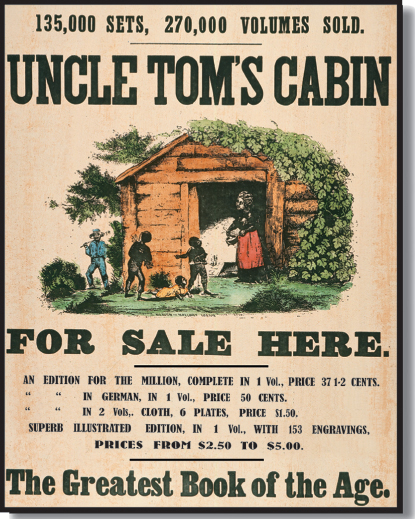What factors helped unravel the balance between slave and free states?
Printed Page 398

THE COMPROMISE OF 1850 began to come apart almost immediately. The implementation of the Fugitive Slave Act brought the horrors of slavery into the North. Moreover, millions of Northerners who never saw a runaway slave confronted slavery through Harriet Beecher Stowe’s Uncle Tom's Cabin, a novel that vividly depicts the brutality of the South’s “peculiar institution.” Congress did its part to undo the Compromise as well. Four years after Congress stitched the sectional compromise together, it ripped the threads out. With the Kansas-Nebraska Act in 1854, it again posed the question of slavery in the territories, the deadliest of all sectional issues.
CHRONOLOGY
1852
- – Uncle Tom’s Cabin is published.
- – Franklin Pierce is elected president.
1853
- – Gadsden Purchase.
1854
- – Kansas-Nebraska Act.
 Enormously popular antislavery novel written by Harriet Beecher Stowe and published in 1852. It helped to solidify northern sentiment against slavery and to confirm white Southerners’ sense that no sympathy remained for them in the free states.
Enormously popular antislavery novel written by Harriet Beecher Stowe and published in 1852. It helped to solidify northern sentiment against slavery and to confirm white Southerners’ sense that no sympathy remained for them in the free states.